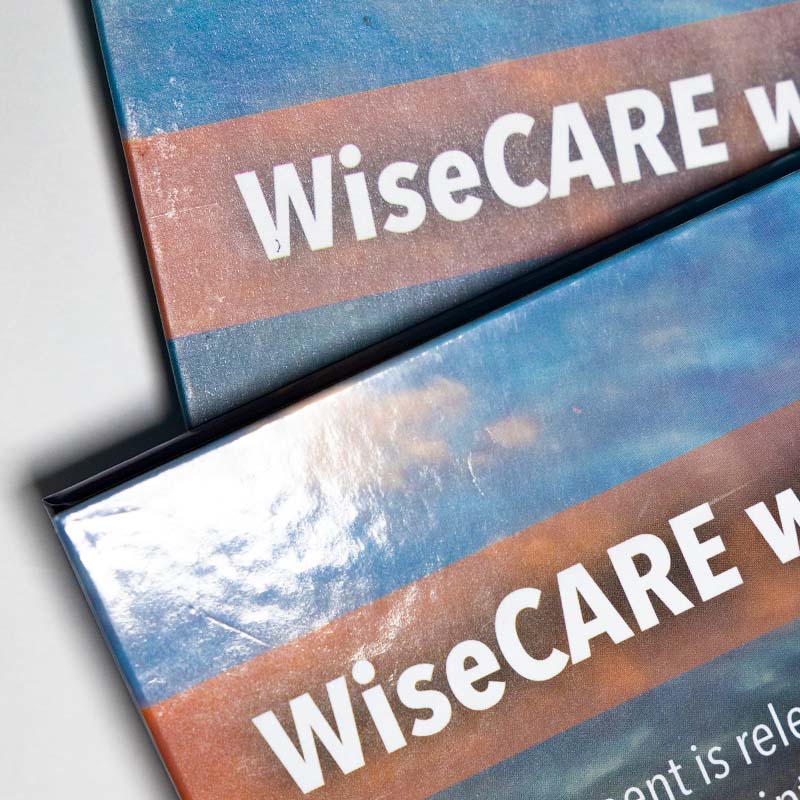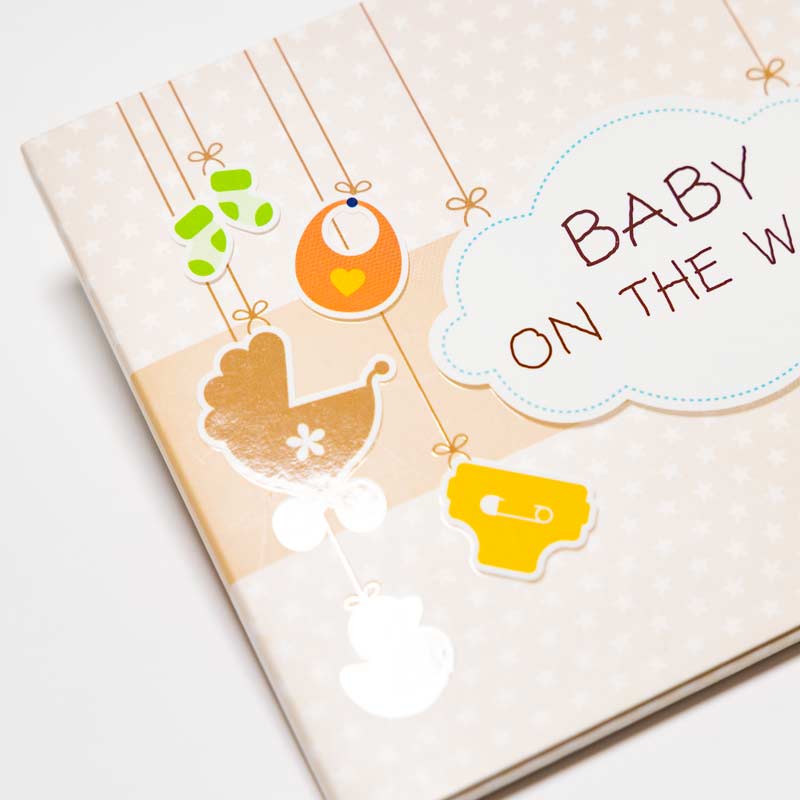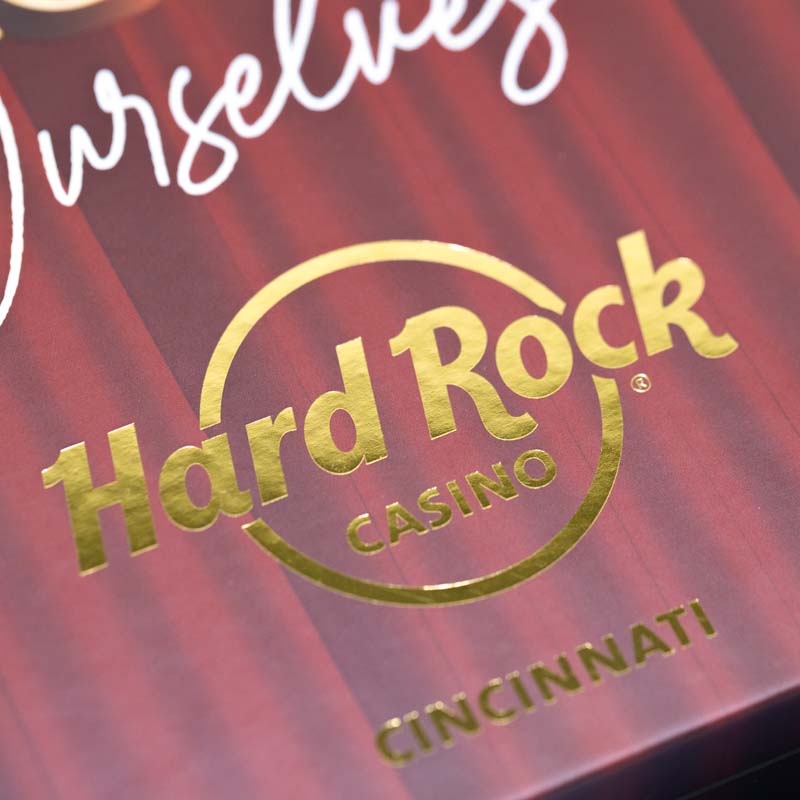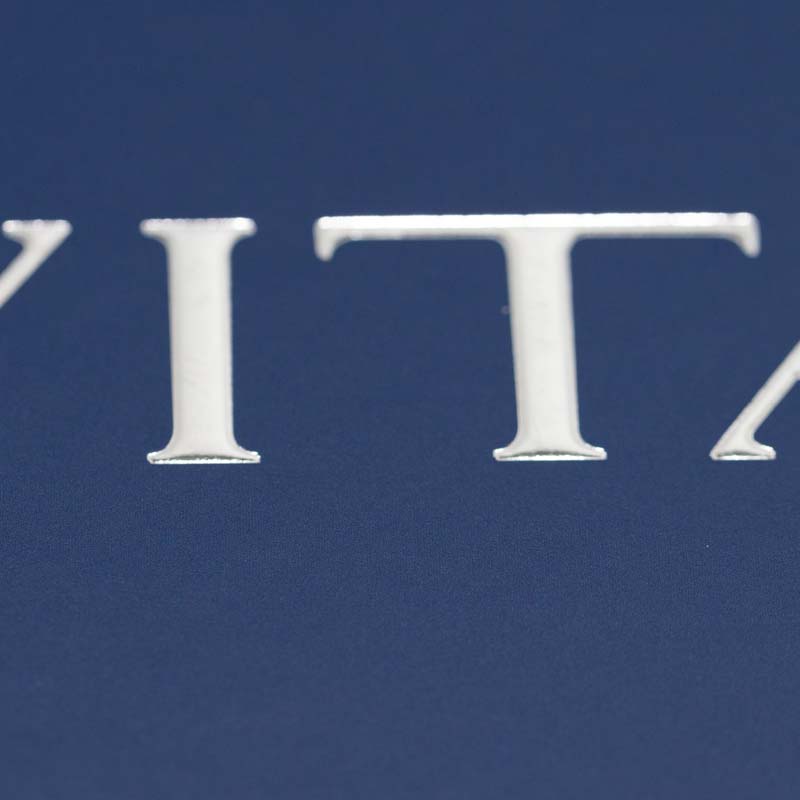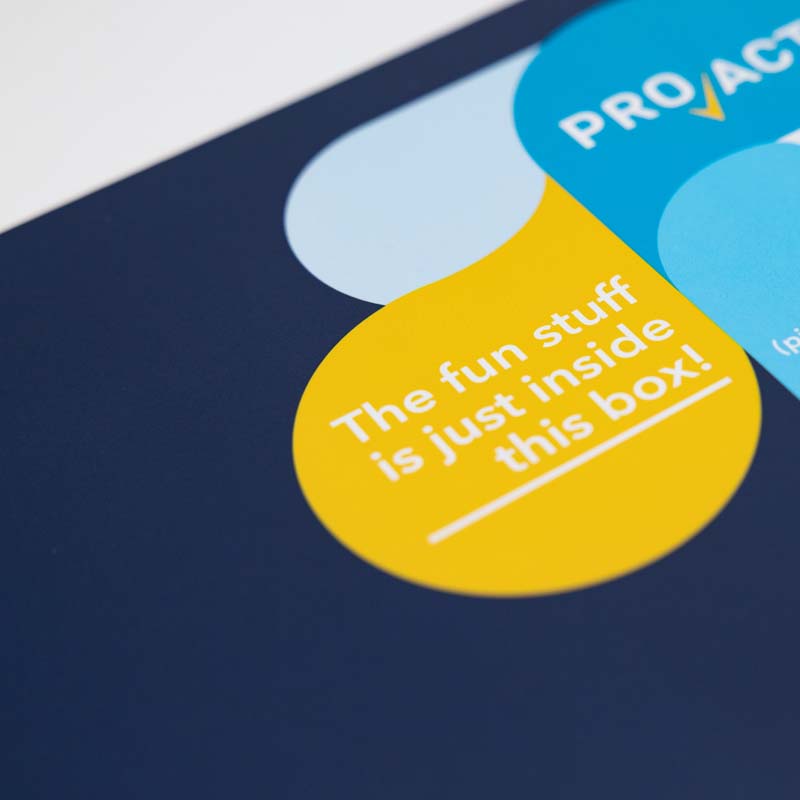VIDEO BROCHURES, VIDEO MAILERS, VIDEO BOXES & SPECIAL PRINTING TECHNIQUES
Printing Techniques
At theVideoCards, we know that first impression is important. That’s why we offer our clients the opportunity to apply special printing techniques to their video brochures, video mailers, and video boxes. With these techniques, they can create marketing materials that are unique, creative, and attractive. The visual styling of the brochure or box can further underline their specific brand and make it more attractive to the eye and, in some cases, to the touch. With special printing techniques, a video brochure makes an impression even before the video starts playing. If you’re looking for a way to make a great first impression, consider enhancing your video brochures, boxes, presentation boxes, or mailers with some of the following upgrades.
Matte or Gloss Lamination
Matte Lamination
When it comes to laminating video brochures, matte lamination is often the preferred option. Unlike glossy lamination, matte lamination results in a more muted finish that makes the material appear soft. Not only does this give printed materials a more attractive and professional appearance, but it also helps protect whatever’s underneath from fingerprints, scratches, and other typical damage.
Matte lamination must be selected if you plan to apply Spot UV coating. Foil stamping also stands out better on a matte video brochure. Keep in mind, though, that a matte finish can visually reduce color saturation, so the overall dark graphic design may look muted and less vibrant.
Gloss Lamination
Glossy lamination has a bold visual impact, with high vibrancy, great contrast, and depth of colors. Glossy lamination is especially effective for dark designs or black brochures. It draws attention with its shine and saturated colors, so some prefer more subtle matte lamination.
It is often selected for video brochures that will be handled often as gloss provides a higher level of protection and can be wiped clean (or, as has become lately very important) disinfected. This type of lamination may also protect the spine of hardcover video brochure from getting damaged. If you are looking for a way to make your printed designs stand out, glossy lamination is definitely worth considering.
Special Printing Techniques
Pantone Colors
To help brands maintain consistent visibility, we offer 4 color process printing with the option to add Pantone colors to the mix. Prints produced with 4 Color Process printing (CMYK) provide incredible results, but Pantone colors offer an added level of consistency (think magenta and T-Mobile). For businesses seeking a uniform color across all their materials, PMS Color is the right choice. All pantone colors are standardized and reproducible regardless of who is designing or printing, creating a constant level of branding that can be seen in everything from video brochures to business cards.
Spot UV Coating
One of the most popular printing techniques is the use of Spot UV. Also called spot gloss or spot varnish, it is the process of printing a thin layer of varnish over an area to create a dramatic contrast of matte and glossy parts. Because the varnish is transparent, we can further divide spot UV into two categories: Blind Spot UV and Raised Spot UV. Blind spot UV is when the varnish is applied over an area that does not have an underlying identical print. On the other hand, raised spot UV is when the area in which the varnish is applied matches the print below – typically a logo, graphical element, or bold text. This printing technique is often used to make these elements stand out more and give them a premium feel. It should be noted that spot UV is not a type of paper coating; rather, it is a separate printing process that is typically done after paper coating.
Note that Spot UV cannot be applied on glossy lamination.
Foil Stamping
Foil stamping is a printing process that uses heat, pressure, metal dies, and foil to create a design on paper. The foil comes in various colors and can be glossy or matte. Heat and pressure are applied to a dye, which transfers foil onto the paper making it stand out. Foil stamping is a specialized printing process that adds sparkle and dimension to any project. When done correctly, foil stamping can make any printed piece look more professional and luxurious. When choosing foil stamping for your next project, keep in mind that there are many different foil colors and finishes available, so you can find the perfect look for your brand.
Foil stamping can also be used to print on black or dark paper.
Embossing and Debossing
Embossing and debossing is a special printing technique that uses metal dyes and pressure to elevate or sink an area of the paper surface slightly. Embossing and debossing have been around for many years and are used in various printing products, from business cards to product packaging. Like with spot UV, this technique can be applied to match a print (logo, text). Blind embossing refers to an effect without print. Embossing and debossing can create unique effects and add a unique look to your video brochure or box.
Soft Touch Coating
We cannot show you a soft touch coating because this technique does not enhance the visual aspect of the brochure. Soft touch coating is a type of printing that adds a rubbery layer to paper, giving it a luxurious velvety feel. It is often used on business cards, booklets, and, in our cases, video brochures, video presentation boxes, and other high-end products. The coating also protects against scuff marks and fingerprints. While the soft-touch coating does not enhance the visual aspect of the brochure, it does add a subtle matte look to the paper surface that is instantly recognizable when handled. As a result, soft touch coating is an ideal choice for those looking to create a high-end look and feel for their printed materials.


